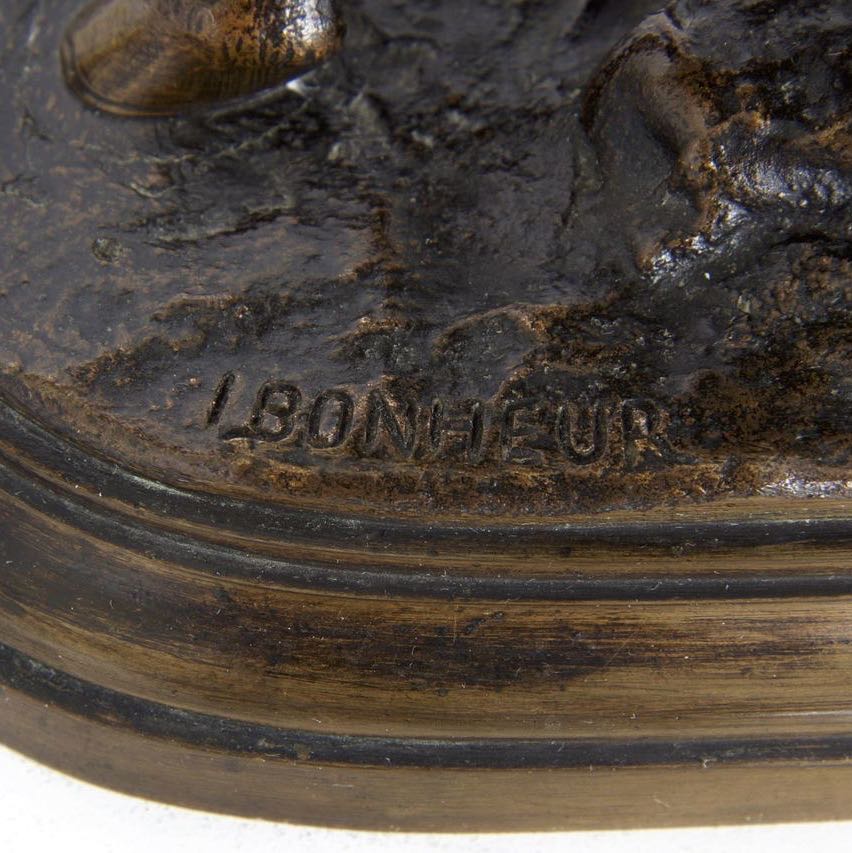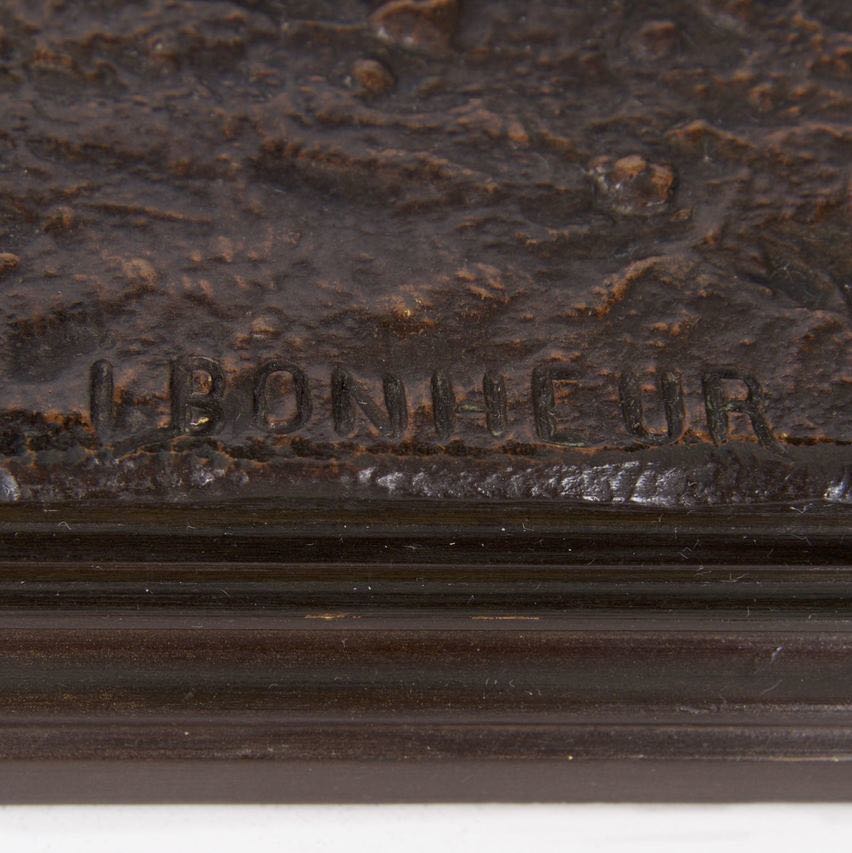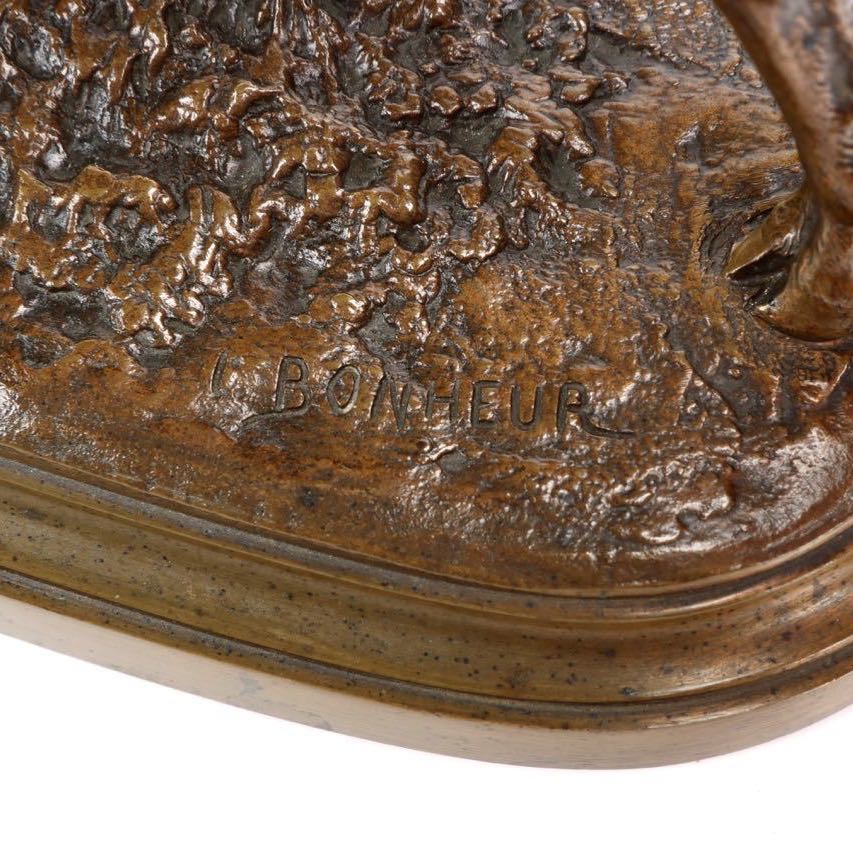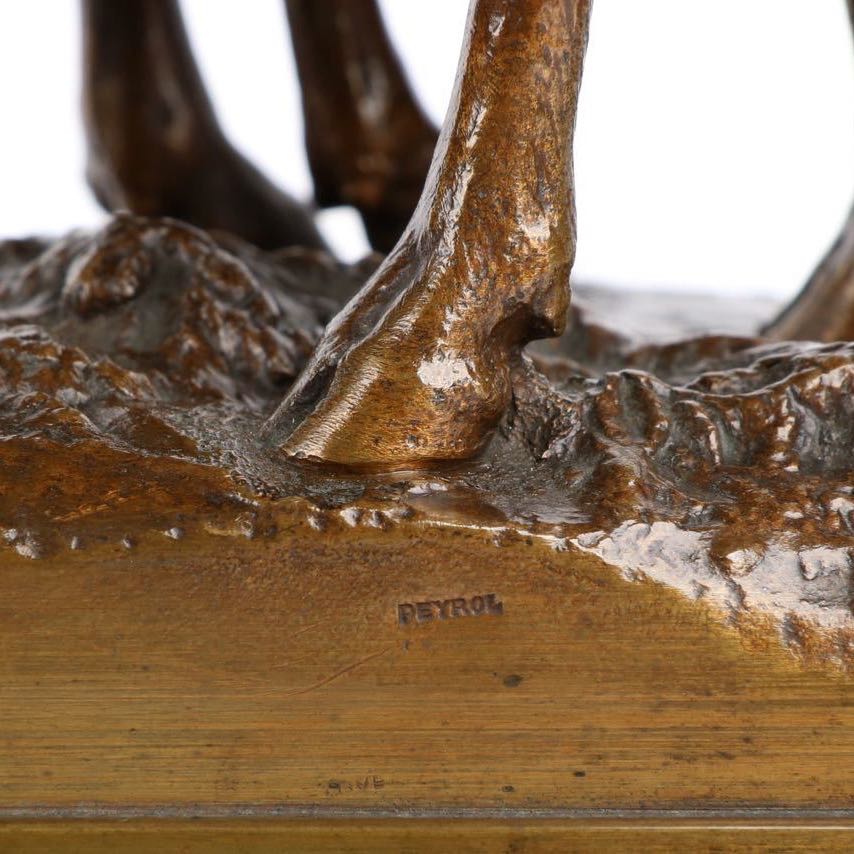Bonheur, Isidore
Born on May 15th of 1827 in Bordeaux, France, Isidore Jules Bonheur was the third child of Christine Dorotheé Sophie Marquis (French, 1797–1833) and Raymond Bonheur (French, 1796–1849). Theirs would become a family of accomplished artists with the arts interwoven into the life of their children from even a very early age. Christine was a musician and Raymond a drawing tutor and painter; their four children would all pursue artistic endeavors, with Rosa and Isidore becoming highly influential in their respective fields while Juliette and Auguste became animal and landscape painters, though of less renown. Isidore Jules Bonheur trained under his father alongside his sister Rosa Bonheur, who noted in her memoirs that even from a very early age she taught him how to model sculptures and accurately capture animal subjects. Because he studied both painting and sculpture, his first submission to the Paris Salon in 1848 was a sculpture executed in plaster and a painting of the same subject: Cavalier Africain Attaqué par un Lion. Notably, his exhibition was a year prior to his enrollment at the Ecole des Beaux-Arts in 1849. Though he would become known mostly for his sculpture, he was actually a rather prolific and talented painter of animals and landscapes.
Around 1850 he began devoting himself entirely to bronze sculpture, mostly smaller Animalier works of sheep, cattle, members of the cat families and numerous Equestrian groups - several of his works were modeled to compliment casts by Rosa, including his Merino Ram, modeled to compliment Rosa's Ewe and his cattle subjects which often paired with Rosa's bull models.
The majority of his work was cast by his brother-in-law, Hippolyte Peyrol, husband to Isidore's sister, Juliette Bonheur; Peyrol operated his own foundry and cast the majority of Rosa and Isidore's work. The earliest pieces are often unmarked, but later these can be identified with a micro cachet generally found discretely situated verso on the edge of the base. The exquisite casting quality, finishing and attention to detail in the complex and varied chemical patinas is likely the result of a close working relationship between the Hippolyte and Isidore.
Isidore exhibited at the Paris Salon until 1899, winning a medal in 1889. At the Exposition of Madrid in 1892 he won a silver medal. In 1894 he achieved a gold medal in the Exposition Internationale d'Anvers and he was made Chevalier of the Légion d'Honneur in 1895. Ultimately, Isidore achieved the highly sought after Médaille d'Or (gold medal) at the Exposition Universelle of 1889.
Recognizing the large and affluent British market, he exhibited at the Royal Academy in 1875 and 1876. Catering to the tastes of collectors in Britain during the same period, he modeled numerous hunting groups and equine subjects well suited to British sporting culture.
His most memorable commission is the pair of crouched stone lions flanking the stairway of the Palais de Justice on the Dauphine Plaza in Paris and one of his best known works is the memorial in Fontainebleau to his sister, Rosa. He died in 1901.
Somewhat overshadowed by the strong personality and commercial success of his sister, Isidore's influence on animal sculpture is hard to overstate. His sensitive and careful portrayals of animals without any of the anthropomorphic tendencies of his predecessors, his sheer breadth of subjects, activities and complexity of interactions left his importance to the Animalier movement firmly and consistently established. His animal bronzes are rightly considered rare, though not as difficult to acquire as Rosa's even more scarce bronzes.
Literature & References:
- E. Benezit Dictionary of Artists, Vol. II, Gründ, 2006, p. 802-803
- Bronzes of the Nineteenth Century: Dictionary of Artists, Pierre Kjellberg, p. 101-106
- The Dictionary of Western Sculptors in Bronze, James Mackay, 1977, p. 46
- The Animaliers, James Mackay1973, p. 46-47, p. 55
- Dictionnaire des Sculpteurs de l'Ecole Français au dix-neuvième siècle, Vol V, Stanislas Lami, 1914, p. 129
EXAMPLES OF SIGNATURES AND FOUNDRY MARKINGS FOR ISIDORE BONHEUR |
 Signature on a lifetime cast by Isidore Bonheur |
 Signature on a somewhat later cast by Isidore Bonheur; note the greater level of tooling and finishing work required |
 Signature on a lifetime cast by Isidore Bonheur; note the exquisite signature cast into the base with less finishing work required than the prior example |
 Foundry mark of Hippolyte Peyrol on a circa 1850-1870's cast of "Standing Ram" by Isidore Bonheur |



